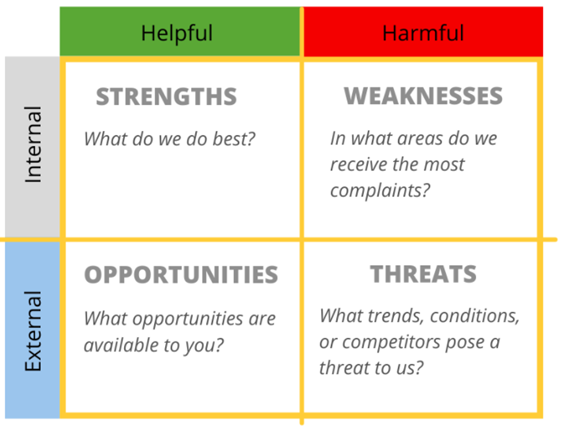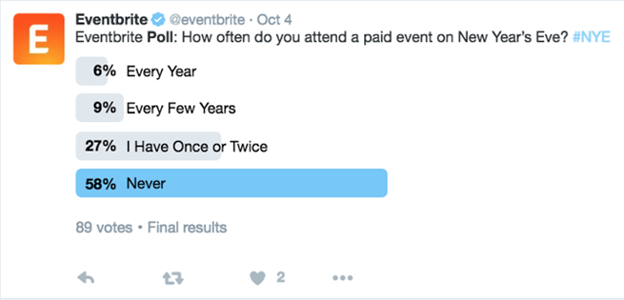Good clothes open all doors, an idiom says, and it applies to many aspects of business.
Your brand is your most valuable asset. If you want your customers to see it as successful and well-organized, it's critical to evaluate what you need to change. Moreover, the first impression significantly affects customers' decision to purchase your products or not.
That is where a brand visual audit comes in. It can help you better understand how successful your brand is in the market.
What Is a Brand Audit?
A brand audit is a deep dive into your brand to evaluate the cohesion of elements such as website design, logos, fonts, etc. You can also identify areas for possible upgrades and your current market position with competitors.
It helps you detect inconsistencies in your brand identity and user experience and reveal gaps in your marketing strategy—for example, whether you need to focus on specific countries or social media channels your target audience uses the most.
It is challenging to maintain consistency as you continually add new content and as your online presence improves. A brand audit can enhance perception of your brand and make it stand out from others in the marketplace. Performing a brand audit is also an excellent way to gather your team and help them gain greater insight into your brand's values, goals, mission, and vision.
A brand audit includes an in-depth examination of various brand aspects: external branding, internal branding, and customer experience. External branding includes visual assets, brand logo, identity, social media, content, email marketing, brand messaging, and SEO. Internal branding includes your fundamental values, mission, goals, brand positioning, competitor analysis, and marketing strategy. Customer experience is about user experience, customer support, sales, and HR processes.
A brand audit serves as a health check for your brand.
How to Do a Brand Audit in Nine Steps
1. Identify the goal of your brand audit
Before doing a brand audit, you must determine what you need to change—for example, whether you want to review social media performance, website traffic, emails, or all of it at once. Fortunately, there are a lot of brand analysis tools available on the market.
Things to consider when auditing your brand's website:
- Conduct a regular checkup on brand consistency. If you notice your conversion or website traffic numbers are dropping, or you have made essential changes inside your team, it's time for a brand audit.
- Redesign your website completely. A visual brand audit can help you figure out what worked well previously and needs improvement.
- Improve the user experience of your website. Make sure to consider technical aspects such as the size or format of images and the overall visual layout of your website.
First, build a framework with a checklist of what you will examine and what tactics you will use. Next, organize the list to include internal and external brand elements.
2. Estimate the current status of your website
Before auditing, it is essential to figure out where your brand stands today. That's why you need to estimate your website's current status.
While doing a brand audit, take a look at your values, mission, and vision and whether they are consistent through all webpages. Pay attention to the fonts, colors, business logo, and overall visual layout that represents your company.
Ensure that your website is mobile-responsive, legible, and compelling for users. Check for any possible loading issues and find the best ways to improve them, such as reducing the size of your images and getting rid of heavy GIF files. That should also improve your bounce rate.
Next, evaluate your visual assets and how they align with your brand to get a clear picture for future improvements. Ask yourself whether your visual branding reflects your messaging, whether you have an excellent online presence on your social channels, and whether you use the correct language or tone of voice.
Pro tip: Conduct a SWOT analysis as part of your brand audit. It will help you reveal opportunities, benefits, implications, and potential problems around your brand.

3. Review website analytics
You can't improve what you don't measure, and running website analytics regularly is one of the critical steps in a successful brand audit. Even if you have the most beautiful website design, if it isn't converting at all... you should figure out why.
Web analytics tools, such as Google Analytics, provide real-time and historical analytics data. They help you better understand what content performs best, how your audience interacts with your website, and what countries your visitors come from.
Metrics to consider for a visual brand audit:
- Website traffic allows you to see how many people visit your website and where they come from. (An unexpected traffic source might highlight a potential new market, or you might identify potential issues that are resulting in low traffic.)
- Conversion rate helps you better understand whether you are reaching your business goals—for example, how many signups or downloads happen on your site, or how often visitors complete the form on your landing page.
- Bounce rate tells you how many people leave your website immediately after their visit. Maybe you have technical issues or boring content, or your messaging is off.
- Pageviews tell you which pages are the most popular and which are unpopular.
Conducting user testing is a great way to see how people interact with your website and to go deeper into your pages or sections that can affect your brand.
Pro tip: Use WebCEO's website audit tool to check how well your webpages load on mobile, how much traffic they get, what their rankings are on Google, etc. It will also help you with A/B testing and optimizing your conversions.
4. Speak to your customers
To successfully audit your brand, you need to speak to your customers and determine what they think. It's essential to get inside customers' heads to know how they feel about your product quality, pricing, customer support, and delivery, as well as what makes them purchase from you.
Fortunately, there are many ways to get valuable customer information for your brand analysis. For example, you can run surveys or polls, or use feedback forms or review sites. Ask what problems customers have while visiting your website, which parts they like or don't like, and what suggestions they have for improving your brand.
You can create forms with Google Forms and send them out to your customers by email. You can automate the process with the right email marketing tool. Reward them for giving their opinions. For example, you can offer free delivery, a discount, or a freebie.
Another way to speak to customers is to use social media. It allows you to gather feedback from a broad audience, but you can ask only one multiple-choice question.

One more thing to mention is sentiment analysis. It helps you understand the emotion behind customers' conversations on forums, blogs, social media, and other online platforms. Sentiment analysis detects positive, negative, and neutral comments about your brand.
It can take some time to collect data, but you can't start making changes without it. Customers can make or break your brand, so it is essential to talk to your customers so you can go on to fix the problems of dissatisfied clients.
5. Review social media analytics
Social media is a goldmine of customer information. Do your paid social media ads get results? What types of customers are interacting with your brand? What comments do they leave about your products or services? How do your social media marketing campaigns perform?
You can answer all those questions using the built-in analytics tools of social media channels. In addition, you can gather valuable information from social media audits, such as the number of pins, shares, retweets, likes, referrals, and more. Moreover, you will learn about your target audience: age, interests, gender, sentiment, location.
A modern data stack allows you to connect social media data to other important business workflows and gain insights about your business. The data gives you a clear picture of your audience and the opportunity to re-evaluate your social communication strategy.
6. Dive into sales stats
An in-depth look at your sales results will identify customer buying patterns and industry trends, helping you reset your focus. Also, some webpages may convert better for different reasons, such as irrelevant images on the product page, a change in the buyer location, or high pricing. Such insights are essential to better understand your brand health and how it influences your sales process.
So, it is time to review your sales and pricing, check on competitors launching new products, and examine how you deliver on your brand promise.
7. Keep track of competitors
Competitor analysis helps you identify potential opportunities in your market and enhance your competitive advantage. The process determines how your competitors are performing from a brand perspective and presents possibilities for improving your marketing campaigns.
Competitor analysis provides valuable information on organic traffic and keywords your competitors are ranking for compared with yours. From a creative standpoint, you can evaluate competitors' language, messaging, tone of voice, brand color, and other design elements.
It is also important to check out competitors' social media channels, paid ads, and marketing materials. Figure out if your branding is consistent with increasing authority and credibility among your clients and competitors. Try to examine all potential ideas for your website and take notes for further moves.
8. Formulate an action plan
Once you have a list of action points and ideas on making your business better, formulate a business plan with your team members, whether it's a new marketing strategy, social media, branding, or email campaigns.
Separate your plan into long-term goals and quick wins. For example, the deletion of low-quality images or shortening the forms on the website to simplify the process can be quick fixes that affect sales.
Regarding long-term goals, it can take a lot time to solve a problem, and it requires cooperation between your team members. For example, if your website content is misinforming and confusing, you'll need some time to rewrite it.
Set deadlines for yourself to complete all your tasks.
9. Monitor results
Once you've made changes based on your brand audit, it's time to begin monitoring results. Check your brand reputation, social media engagement, conversions, sales, email campaigns, and changes in ROI.
A good way to review results is to conduct A/B testing to figure out whether your improvements are working. Another way is to ask your customers what they think about the changes or whether they have problems with particular aspects of your brand.
Bottom Line
A visual brand audit is an important part of any relationship you build with your customers. It requires customer feedback, competitor analysis, technical checkups, and internal evaluation. If you start auditing today, you'll identify potential roadblocks and fix them to give your brand time to grow.
More Resources on Brand Audits and Brand Health
A Six-Step Guide to Conducting a Brand Audit [Infographic]




